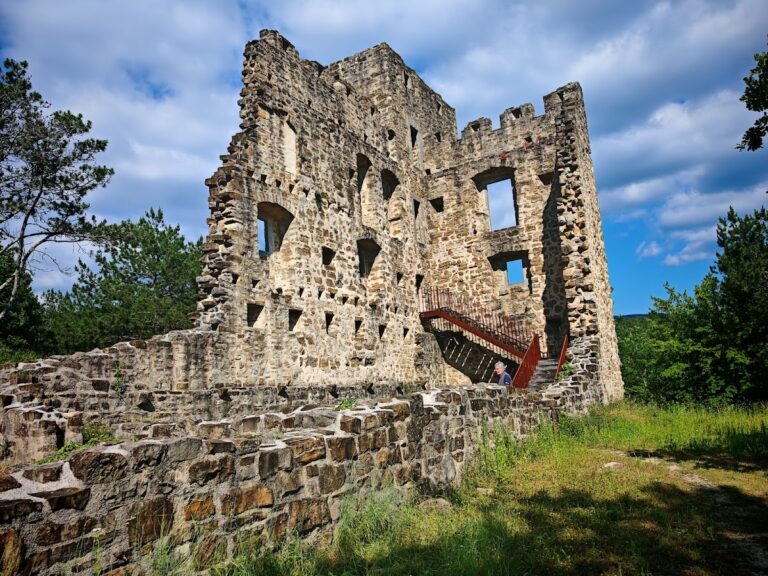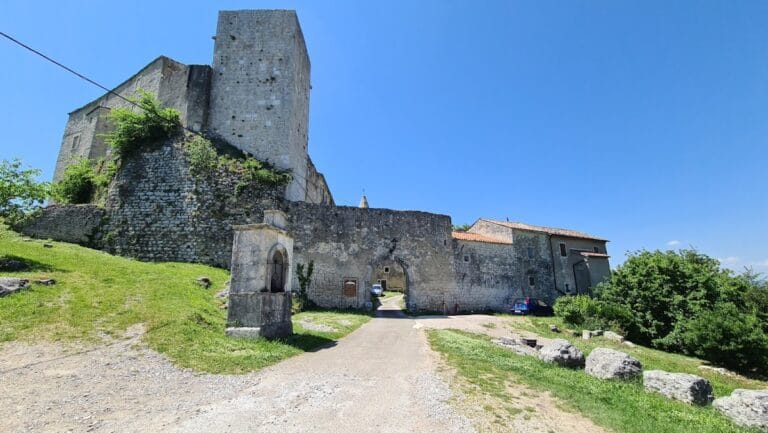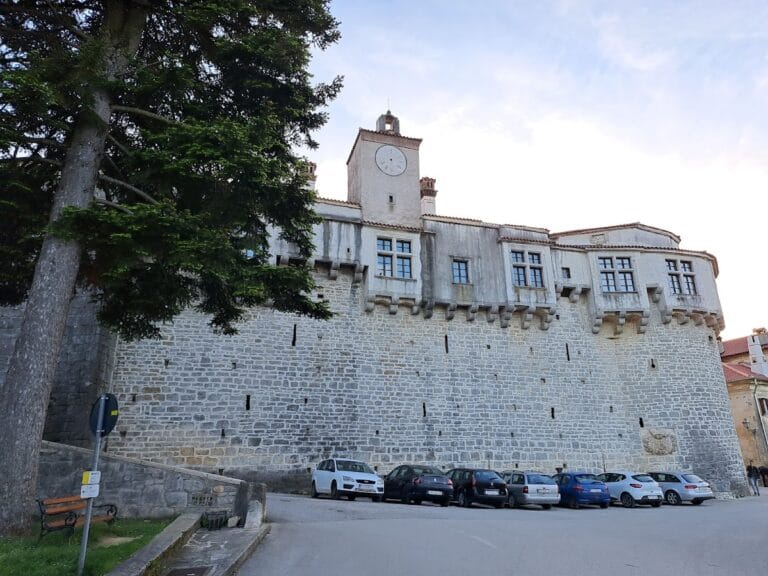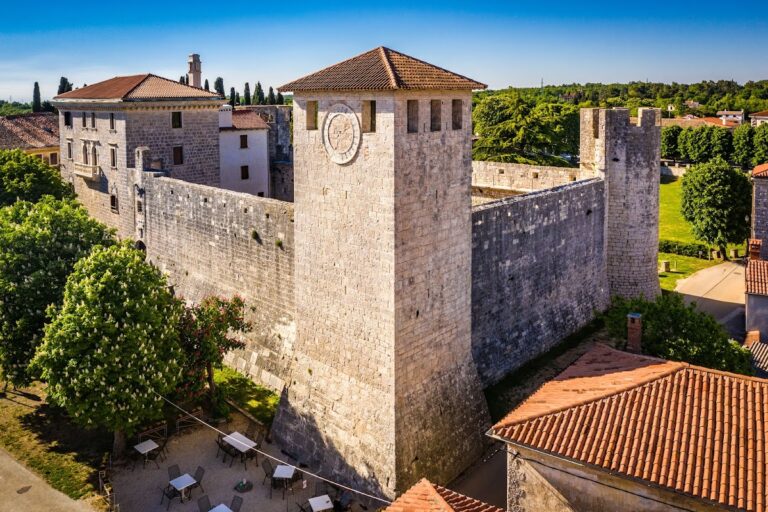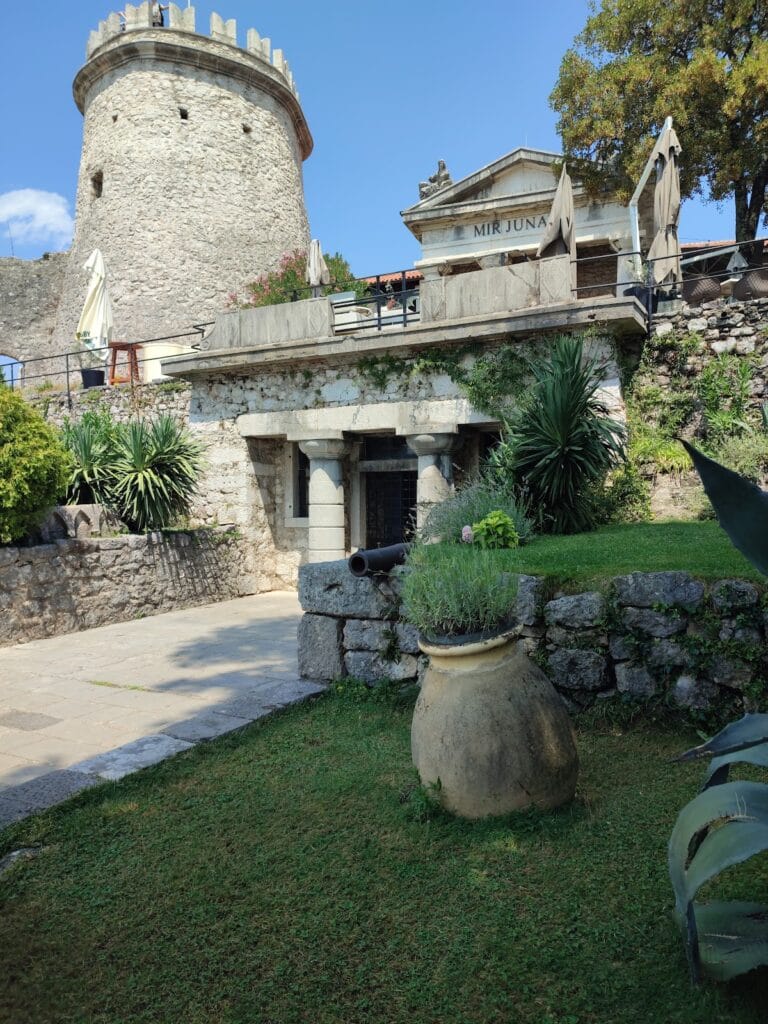Belaj Castle: A Late Medieval Fortress and Estate in Croatia
Visitor Information
Google Rating: 4.6
Popularity: Low
Google Maps: View on Google Maps
Official Website: www.castlebelaj.com
Country: Croatia
Civilization: Medieval European
Remains: Military
History
Belaj Castle is situated near the municipality of Boljun in modern-day Croatia. The castle known today has its origins in the late medieval period, built by local feudal lords during a time of territorial consolidation in the region.
The earliest record associated with this site dates back to 1367, where a manor referred to as “Bray” appears in a document issued by the Patriarch of Aquileia. At that time, the land was temporarily granted to his vassal, Dujam of St. Vitus from Rijeka, indicating its significance within the feudal hierarchy of the period. By the mid-1500s, ownership had passed to Janez (Giovanni) Barbo, a member of a noble family holding estates in the area.
Following the Uskok War, which took place between 1615 and 1617 and resulted in the destruction of nearby fortifications like Castle Šabec or St. Martin at Posert, Danijel Barbo Waxensteinski initiated the construction of the current castle. This development served as a fresh residence and a strategic estate consolidation after the conflict. The Barbo family retained control until 1668, a year when the castle, along with surrounding lands including Paz, Čepić, and Kožljak, was sold to Prince Janez Vajkard Auersperg. Auersperg, a prominent minister and foreign minister of Emperor Leopold I of the Habsburg monarchy, brought the estate under the wider imperial influence.
In 1701, Janez Auersperg succeeded in uniting the castles and estates of Paz County into one administrative manor, naming it “Wachsenstein” after Kožljak. This reorganization led to the transfer of the region’s administrative hub from the older Kožljak Castle to Belaj, enhancing its political importance. Throughout the late 17th and 18th centuries, the Auersperg family remodeled the castle, embracing a rustic aesthetic that reflected contemporary tastes of regional noble estates.
The Auersperg heirs maintained possession of Belaj Castle until the close of World War II. In 1945, the castle was nationalized by the new Yugoslav government, which assigned the property to a local agricultural cooperative in line with post-war land reforms. In more recent years, the castle returned to private ownership when the Belaj family acquired and restored the estate, transforming it into a site featuring a vineyard and a winery spanning 17 hectares, which revitalized its historic agricultural tradition.
Separately, it should be noted that an older castle also named Belaj near Karlovac, constructed perhaps in the 15th century by the Tomasich family, was destroyed in 1834 and has since disappeared without surviving remains.
Remains
Belaj Castle today stands as a well-preserved, late medieval fortress with a rectangular main residential building extending approximately 40 by 20 meters. This four-story structure forms the core of the site, arranged around an interior courtyard that is enclosed on three sides by graceful semicircular arcades on both the ground and first floors. These arcades provide an architectural continuity uncommon for military fortresses of the period, reflecting the castle’s dual function as both residence and stronghold.
The northwest wing serves as the main entrance, marked by a prominent stone portal. Above it rises a shallow attic adorned with a cornice and an 18th-century bell niche, added when this wing was elevated by an additional story in an expansion phase. Historical evidence of the castle’s earlier appearance exists in a detailed copper engraving created in 1679 by Johann Weichart Valvasor, offering a visual record prior to modern restorations.
Inside, the first-floor gallery once displayed painted landscapes depicting the castle and its surrounding countryside, remnants of which underscore the site’s cultural as well as defensive roles. Flanking the main palace are long, narrow agricultural buildings, each single story with gabled roofs. These contain cellars, stables, and barns, all structurally integrated with the castle’s high stone defensive walls.
Within the ground floor of the castle lies a private chapel dedicated to Saint Henry the King. This sacred space is notable for its Baroque marble altar and an altarpiece painted by Leopold Keckheisen, linking religious devotion with artistic patronage. The chapel also houses several important tombstones from local noble families. These include members of the Barbo family—among them Laura Barbo—as well as nobles from Kršan, Kožljak, and Paz. In particular, the tombstone of Martin Mojses features an inscription in Glagolitic script, an ancient Slavic alphabet, connecting the castle with regional cultural history. These monuments were transferred here following the closure of the nearby Pauline monastery at the Church of St. Mary on Lake Čepić in 1783.
These combined features, from defensive walls and agricultural annexes to private chapels and noble tombstones, compose a multifaceted heritage site reflecting centuries of feudal life, religious practice, and estate management at Belaj Castle.


